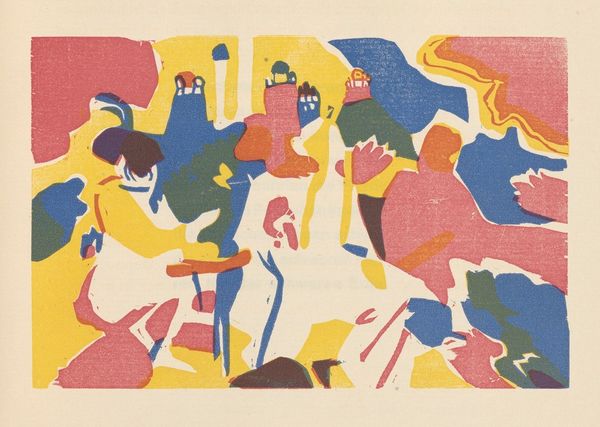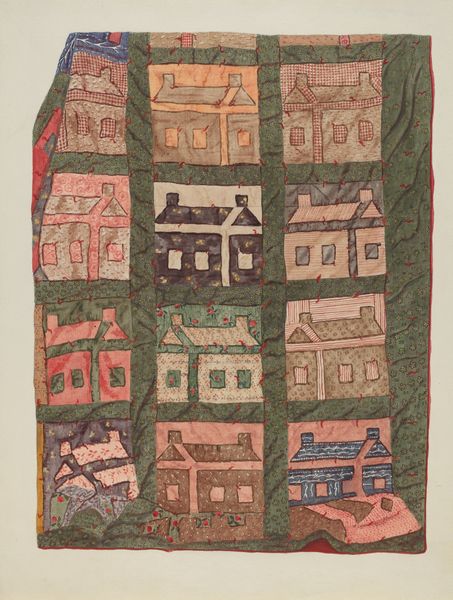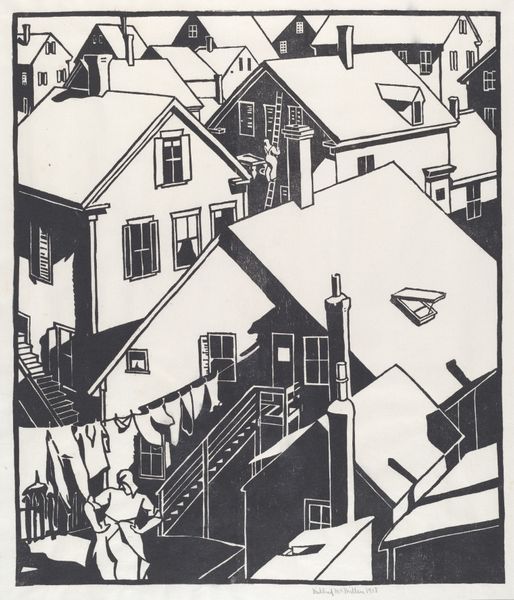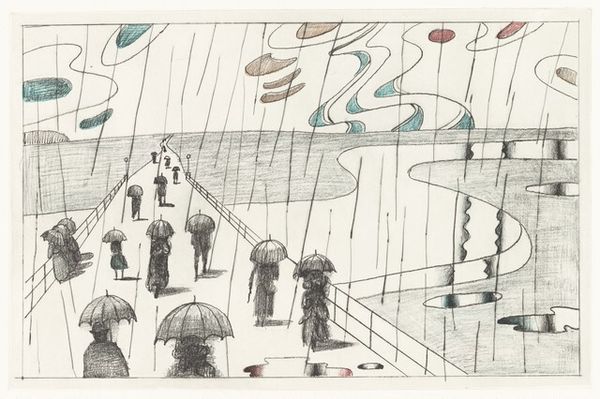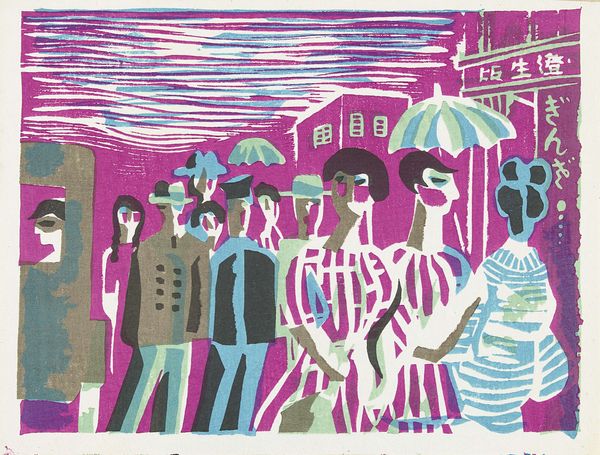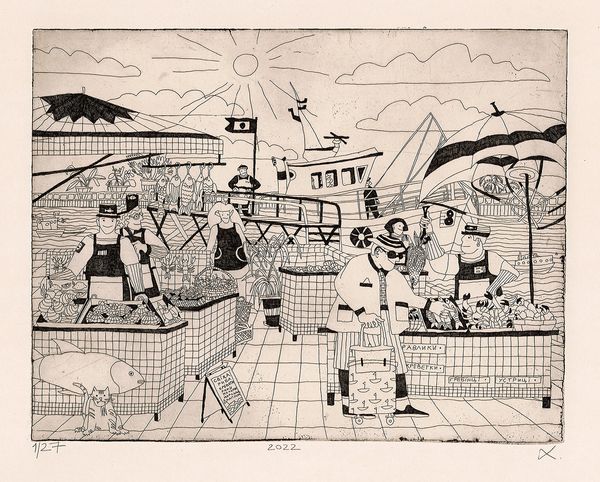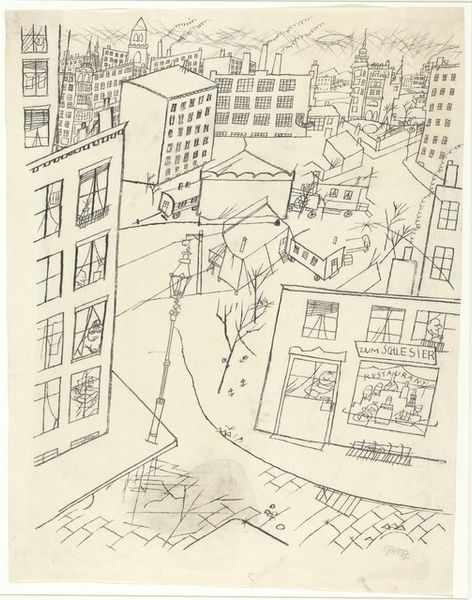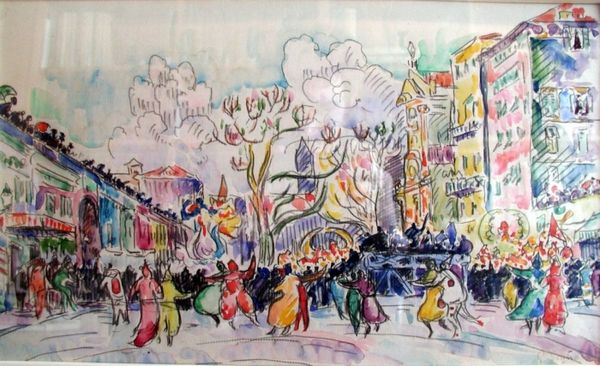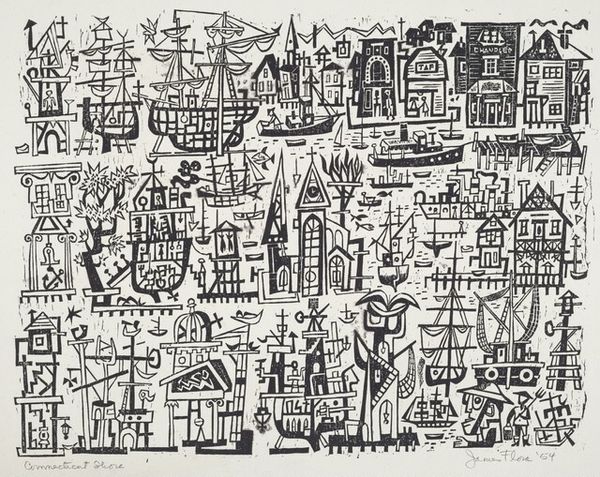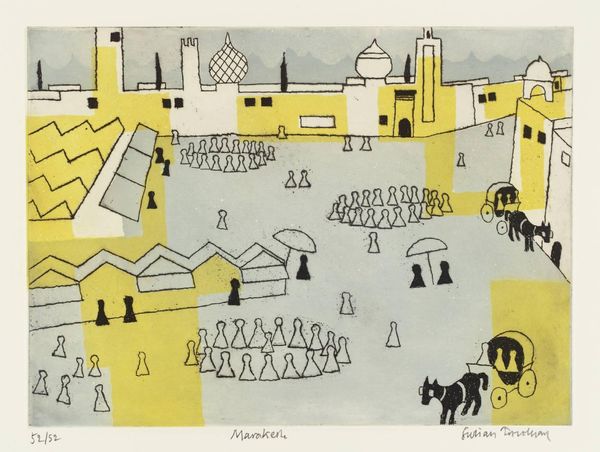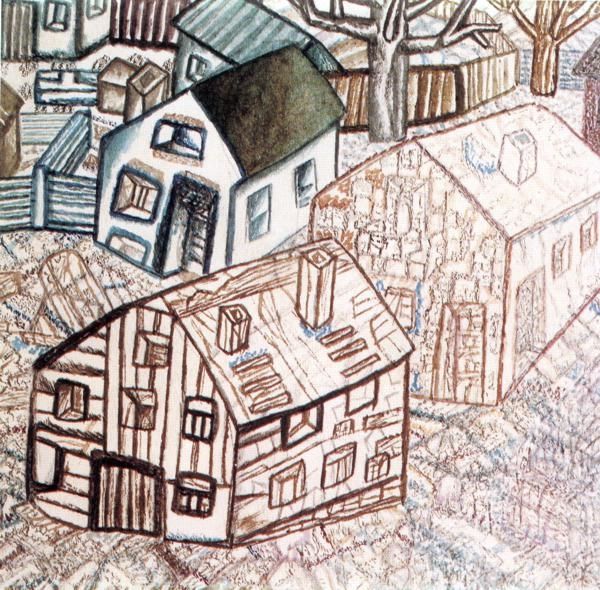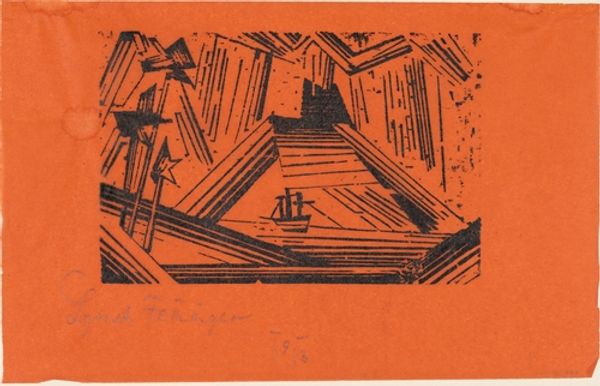
Copyright: Public domain
Editor: Here we have "Guys with a Goat," a 1936 ink drawing by Josef Capek. It’s really lively! The red and blue inks make it so vibrant. What initially strikes me is this feeling of… organized chaos. Like a village parade, maybe? What do you see in this piece? Curator: Ah, chaos perfectly describes Capek's genius! Look closer. It *seems* whimsical, doesn't it? Children, flags, a rather distinguished goat, all rendered in a playfully naive style. But remember the year: 1936. Europe was teetering. To me, this isn't simply a joyous parade, but perhaps a bittersweet echo of simpler times, a frantic attempt to hold onto something innocent before the storm. Does that childlike exuberance hide a deeper anxiety, you think? Editor: That's fascinating, I hadn’t considered the historical context. So, the 'chaos' isn’t just stylistic? Are the flags and figures symbolic in any way, possibly reflective of Capek’s concerns about impending doom? Curator: Symbolism is slippery! Those flags could be nationalistic fervor, yes, but consider how Capek flattens perspective. Everyone’s on the same plane, all waving the same flags. Is it celebration, or is it a loss of individuality within a rising tide of something… darker? Even the goat has this unnerving calm amid it all! Editor: It’s unsettling! I see it now – a layer of dread beneath the colourful surface. It completely changes how I perceive it. Curator: Precisely! Capek doesn't hit you over the head. He invites you into this colourful world and then subtly subverts it. Art Nouveau on the brink, perhaps? Editor: Definitely food for thought. I came expecting charming folk art, and I'm leaving with a disquieting commentary on pre-war Europe. Amazing. Curator: Exactly! And that's the enduring magic, isn't it? Art whispering its secrets across time.
Comments
No comments
Be the first to comment and join the conversation on the ultimate creative platform.
